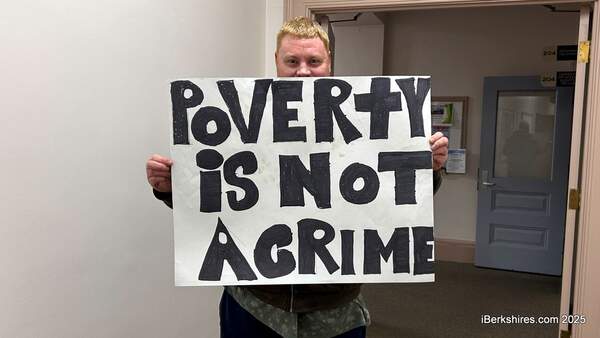Pittsfield Council Sees 3rd Quarter ARPA Spending
PITTSFIELD, Mass. — About $1.6 million in American Rescue Plan Act expenditures were made from July to September, with 59 percent going toward infrastructure projects.
The second largest area of spending, 32 percent, addressed negative economic impacts.
Special project co-manager Gina Armstrong reported to the City Council this week hat the use of the city's $41 million ARPA funds had expanded significantly in the third quarter.
"A wide range of city led projects are underway," she said. "As well as capital projects and programs by our community-based organizations that were awarded ARPA funding this past spring and summer."
The total expenditures reported through the third quarter of the year are about $3.7 million with 70 percent going toward infrastructure and 15 percent for negative economic impacts.
So far 37 nonprofits have received a total of $8.8 million in city ARPA funds; 26 of the grants have been executed and about $1.5 million was used during the last quarter.
"We continue to work towards execution of all of the different grant agreements," co-project manager Deanna Ruffer explained. "There are a couple of organizations for various reasons who have delayed the start of their programs but by the first quarter of 2023 we expect all will be underway."
She also reported the city had put together a partner collaboration to help it maximize the benefits of the monies.
Ruffer highlighted four different organizations that were aided by ARPA: Goodwill Industries of the Berkshires received $200,000 for the replacement of its headquarters' roof; the George B. Crane Memorial Center, $90,000 for its center supporting those in recovery from substance abuse; Second Street Second Chances, $700,000 for its one-stop re-entry center for formerly incarcerated residents; and Berkshire Civic Ballet, $51,920 for scholarships to its dance program.
Ruffer reported that the Second Street Second Chances center served 87 residents in its first quarter of operations and continues to exceed the city's expectations.
The initiative began this year in the former jail on Second Street and provides a wide array of post-incarceration services, case management, and workforce training. It aims to prepare former inmates for success when returning to the community.
In February, it was awarded $240,300 through the state’s Community Empowerment and Reinvestment Grant Program.
The project managers also gave an update on three water treatment projects that were given a boost with ARPA funds. The Ashley Water Treatment facility upgrades for the citywide drinking supply are 42 percent completed, work has just started with the Cleveland Water Treatment Facility upgrades, and the city wastewater treatment plant's energy efficiency upgrades are 5 percent complete.
Mayor Linda Tyer said using ARPA funds for these repairs relieves the burden on the taxpayer.
Ward 2 Councilor Charles Kronick was upset about the report, claiming that it is full of "red flags" and doesn't tell where the money is being spent.
"I cannot go through these reports and find out any sense that money is actually being spent where they're saying they're spending it," he said.
"And to me, that is a fundamental problem of transparency."
It was pointed out that a brief presentation was prepared for the City Council and the more than 30-page report is available on the city website as required by the U.S. Treasury. The project managers also agreed to provide the council with more detailed reports.
Ward 1 Councilor Kenneth Warren and Councilor at Large Peter White defended the details of the report.
Warren has been vocal about the city's process for ARPA funds from the time he was elected, earlier advising the panel to be thorough with its reporting of the use of the monies.
He has gotten both the applications and contracts to the awardees and though it was not a completely smooth process, said the documents are available.
"I'm finding it to be fairly detailed. I know you gave a quick summary, which I appreciate a quick summary," White said
"If anyone dives into this 31-page report, it has purchase orders, it has the amounts that have gone out."
Tags: ARPA,
















